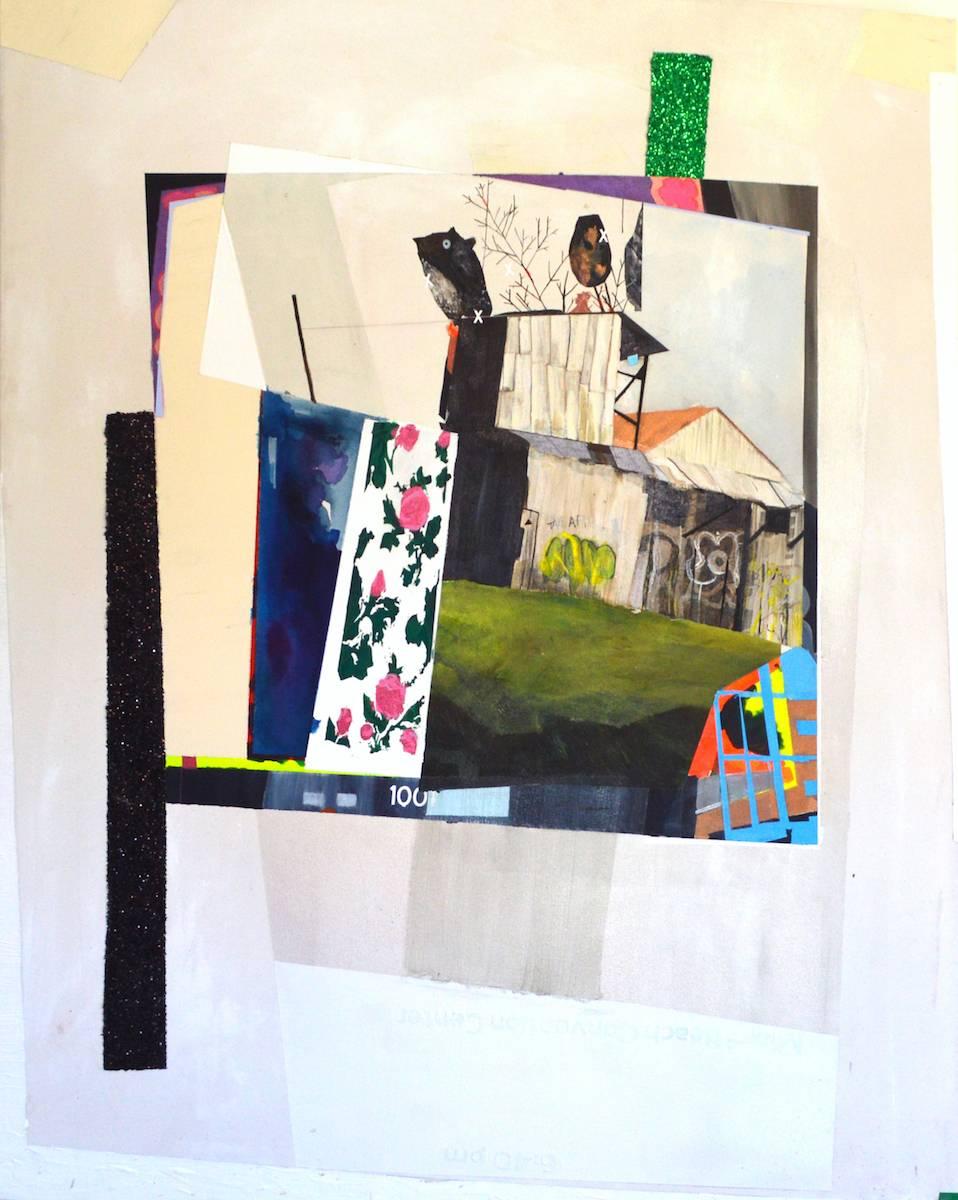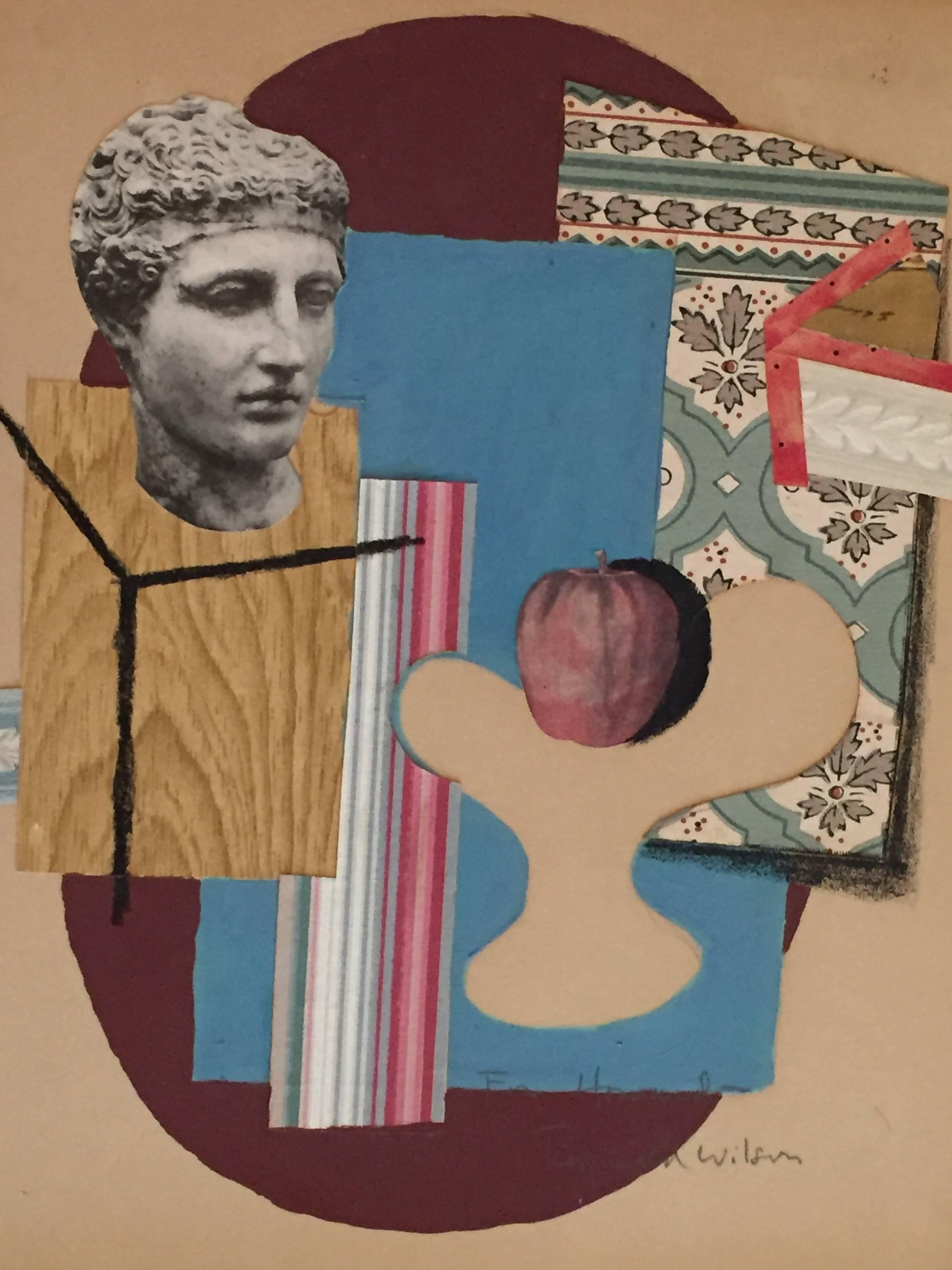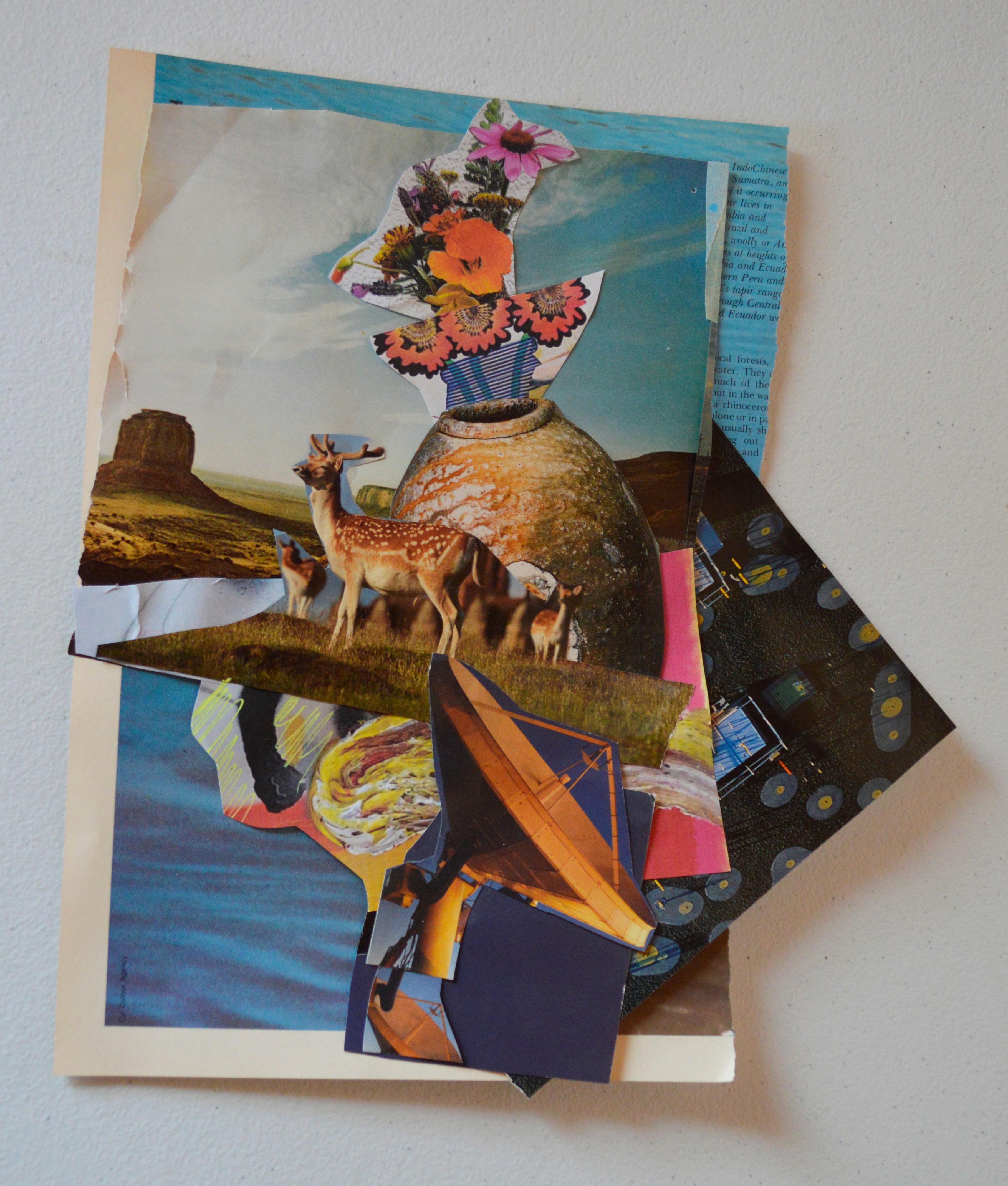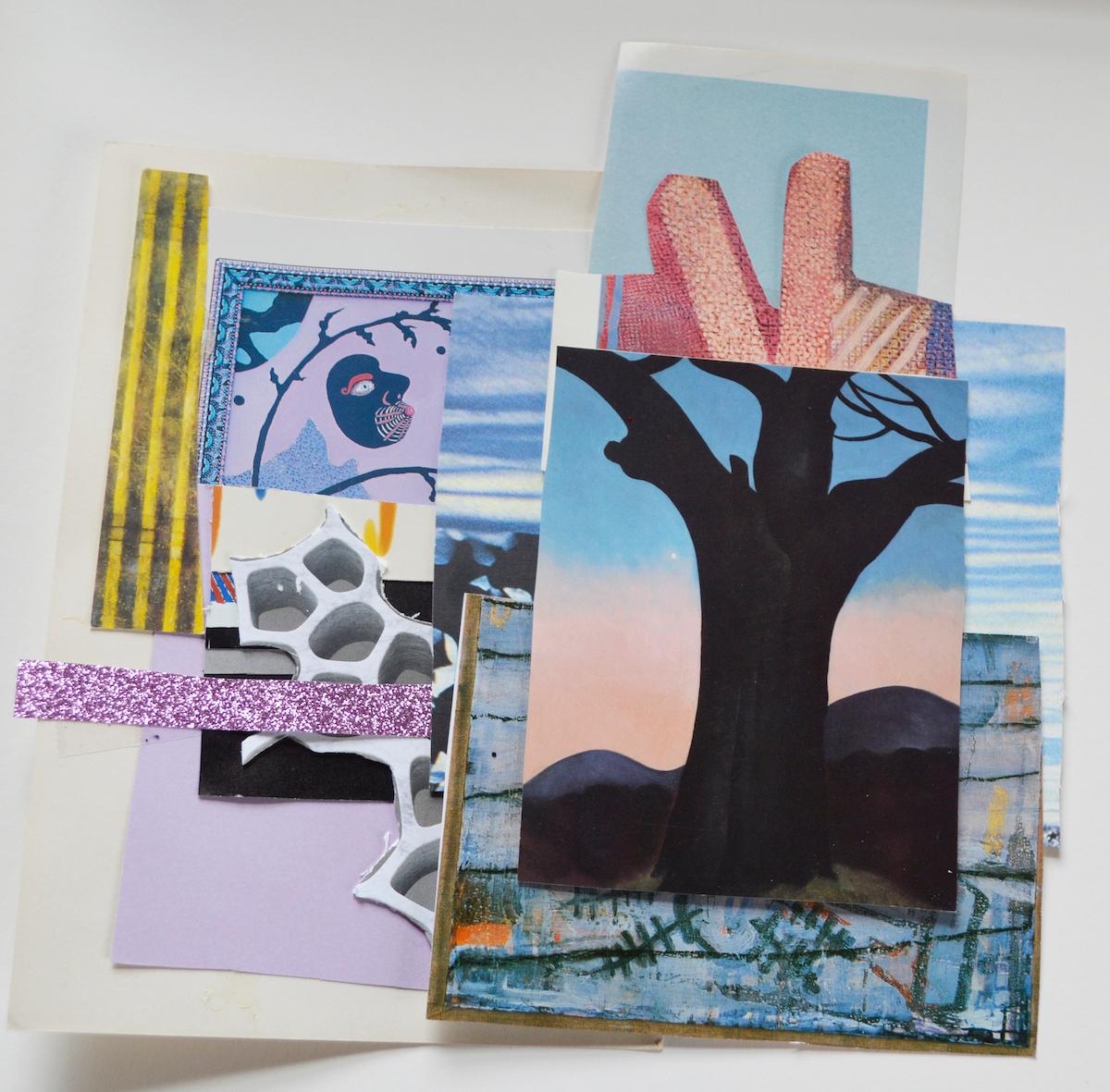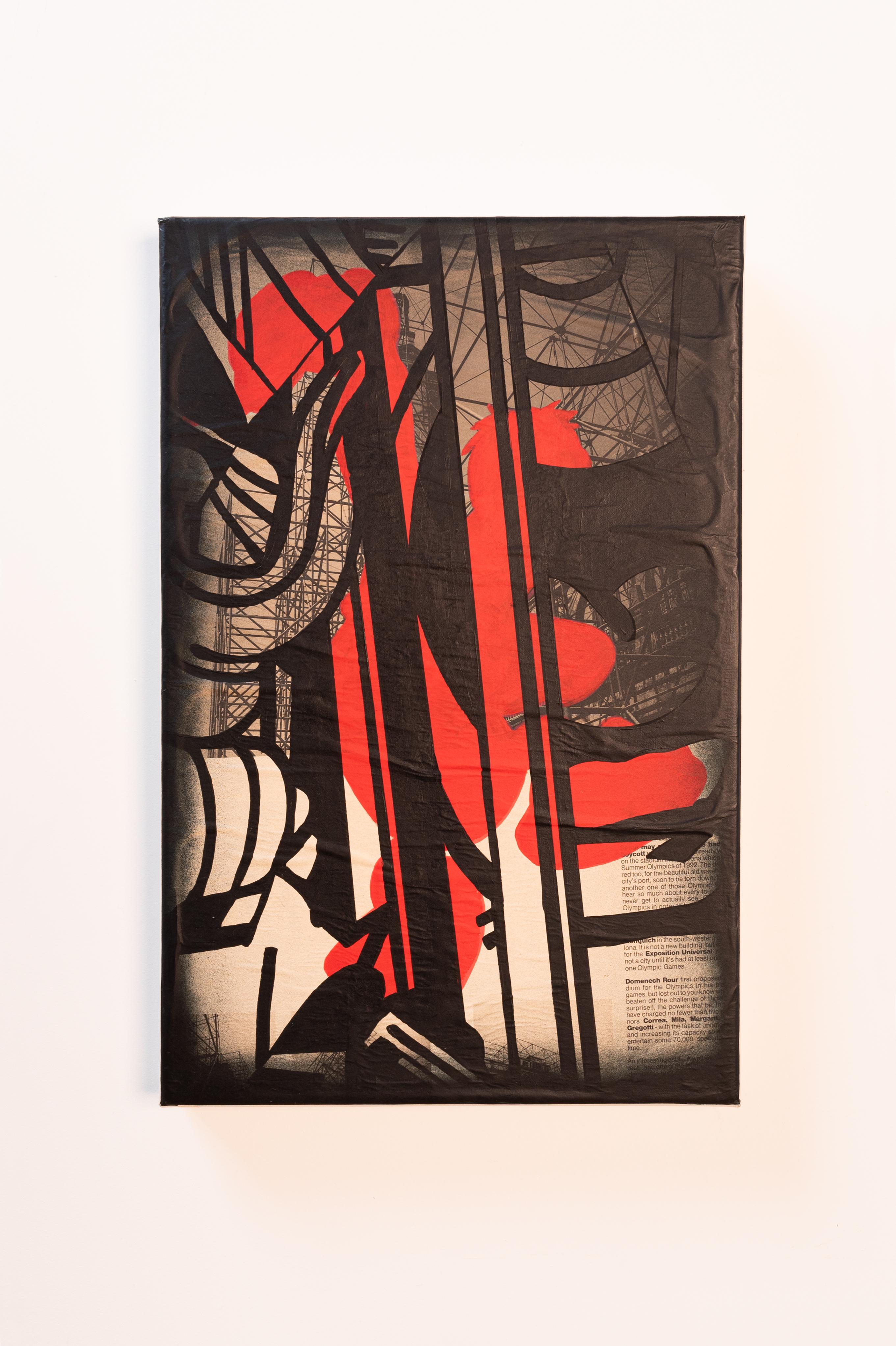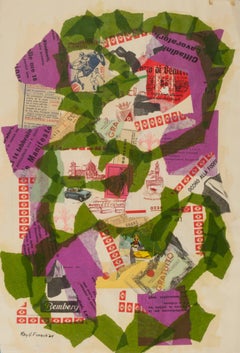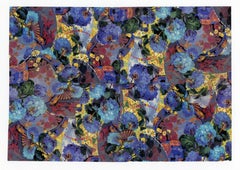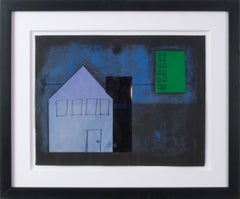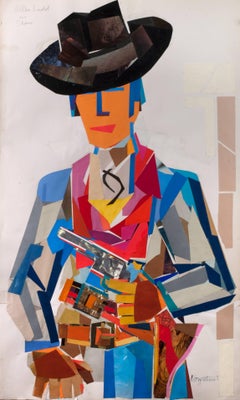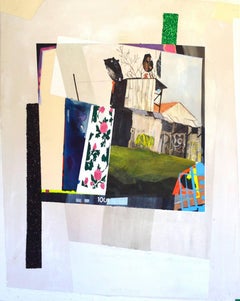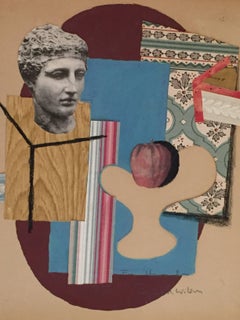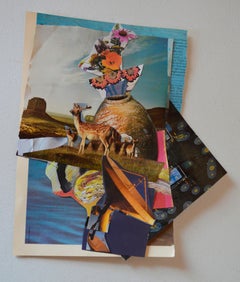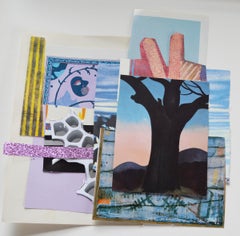Want more images or videos?
Request additional images or videos from the seller
1 of 7
Stephen LongstreetTribute to Bix Beiberbecke1974
1974
$2,000
£1,540.57
€1,759.15
CA$2,853.04
A$3,120.70
CHF 1,637.67
MX$37,321.80
NOK 20,667.24
SEK 19,280.04
DKK 13,137.60
About the Item
Tribute to Bix Beiberbecke
Mixed media collage, 1974
Signed and titled in ink; lower right recto (see photo)
Signed and dated ’74 in red crayon verso
Image size: 32.5 x 22.75 inches
Condition: Wrinkles due to collage and support sheet
Provenance: Joseph Erdelac, Cleveland (friend and patron of Longstreet)
One of the first Jazz Legends. He died at age 28 from alcoholism.
Leon Bismark "Bix" Beiderbecke (March 10, 1903 – August 6, 1931) was an American jazz cornetist, pianist, and composer.
Stephen Longstreet (1907-2002)
Born Chauncy Weiner (sometimes spelled Wiener) in New York City in 1907, Longstreet reinvented himself on a regular basis. Changing his name first to “Henry,” then “Henri,” he started his career as a commercial artist for a department store. In various public biographies he claimed to have studied in New York, London, and Paris, and said he was a student of cartoonist Ralph Barton (1891-1931). Facts that can be documented are that he was art editor for Golfer and Sportsman magazines, and was a contributor to various other magazines including The New Yorker, Saturday Evening Post, Colliers, Life, and Hooey, among others. He wrote sketches for NBC radio and the Rudy Vallee Show.
In the 1930s, Longstreet worked and wrote under the names Thomas Burton, David Ormsbee, and Paul Haggard before settling on the name Stephen Longstreet in 1939. He wrote 12 novels under this name as well as numerous screen plays, most notably The Jolson Story, The Greatest Show on Earth, and The Helen Morgan Story.
Longstreet claimed to have been introduced to ragtime and jazz by no less a legend than singer Paul Robeson while Robeson was an All-American football player at Rutgers University. However it happened, the world of jazz was a constant theme throughout Longstreet’s life. He drew and painted such notables as Count Basie, Sarah Vaughan, Billie Holiday, and Duke Ellington. His media included collage, watercolors, and ink drawings. In 1989 Longstreet published his 100th book, Jazz from A to Z: a Graphic Dictionary.
One of the more curious aspects of Longstreet’s art is his method of dating his material. He dated his works by the year depicted, not by the date of actual execution. Art signed “Longstreet” and dated before 1939 was actually done much later, as Stephen Longstreet did not exist prior to that! Early works from the late 1920s and 1930s will be signed “Henri” or “He” since Longstreet was still Weiner in those days. Later he often signed his work SL inside a circle. His collages dated in the 1950s or earlier were most likely done in the 1970s or 1980s.
Longstreet spent most of his life in the Los Angeles area with his wife and oft-times collaborator, Ethel Longstreet. The artist remained active and prolific into his 90s. He died in Los Angeles in 2002 at the age of 94.
Beiderbecke was one of the most influential jazz soloists of the 1920s, a cornet player noted for an inventive lyrical approach and purity of tone, with such clarity of sound that one contemporary famously described it like "shooting bullets at a bell". His solos on seminal recordings such as "Singin' the Blues" and "I'm Coming, Virginia" (both 1927) demonstrate a gift for extended improvisation that heralded the jazz ballad style, in which jazz solos are an integral part of the composition. Moreover, his use of extended chords and an ability to improvise freely along harmonic as well as melodic lines are echoed in post-WWII developments in jazz. "In a Mist" (1927) is the best known of Beiderbecke's published piano compositions, and the only one that he recorded. His piano style reflects both jazz and classical (mainly impressionist) influences. All five of his piano compositions were published by Robbins Music during his lifetime.
A native of Davenport, Iowa, Beiderbecke taught himself to play the cornet largely by ear, leading him to adopt a non-standard fingering technique that informed his unique style.
Beiderbecke's most influential recordings date from his time with Goldkette and Whiteman, although he also recorded under his own name and that of Trumbauer's. The Whiteman period marked a precipitous decline in his health due to his increasing use of alcohol. Treatment for alcoholism in rehabilitation centers, with the support of Whiteman and the Beiderbecke family, failed to stop his decline. He left the Whiteman band in 1929 and in the summer of 1931 he died in his Sunnyside, Queens, New York apartment at the age of 28.
Courtesy Wikipedia
- Creator:
- Creation Year:1974
- Dimensions:Height: 32.5 in (82.55 cm)Width: 22.75 in (57.79 cm)
- Medium:
- Movement & Style:
- Period:
- Condition:
- Gallery Location:Fairlawn, OH
- Reference Number:Seller: FA101361stDibs: LU14013291772
About the Seller
5.0
Recognized Seller
These prestigious sellers are industry leaders and represent the highest echelon for item quality and design.
Gold Seller
Premium sellers maintaining a 4.3+ rating and 24-hour response times
Established in 1978
1stDibs seller since 2013
827 sales on 1stDibs
Typical response time: <1 hour
Associations
International Fine Print Dealers Association
- ShippingRetrieving quote...Shipping from: Fairlawn, OH
- Return Policy
More From This Seller
View AllUntitled
By Ray H. French
Located in Fairlawn, OH
Signed and dated lower left
Created in 1964 while the artist was living in Florence, Italy
Collage with tissue paper and printed images and text
From the Estate of the Artist
Category
1960s Abstract Expressionist Mixed Media
Materials
Mixed Media
Untitled
By Peter Marks
Located in Fairlawn, OH
Untitled Abstraction
Unsigned
Mixed media, c. 2003-2004
Provenance:
Estate of the artist
Peter Marks (1935 -2010)
Peter Marks was born in New York City on January 18, 1935. A life...
Category
Early 2000s Contemporary Mixed Media
Materials
Mixed Media
untitled
By Remo Michael Farruggio
Located in Fairlawn, OH
Pastel, colored pencil with collage elements
Unsigned
Condition: Repaired tear in the area of the moon, only visible from verso
Pin holes in the corners and in the ...
Category
1940s Surrealist Mixed Media
Materials
Pastel, Mixed Media, Color Pencil
Allen Ladd as Shane
By Stephen Longstreet
Located in Fairlawn, OH
Allen Ladd as Shane
Colored and metallic paper collage. c. 1960's
Signed in ink lower right; Signed in pencil on reverse; (see photo)
Titled in pencil upper left recto (see photo)
C...
Category
1960s American Modern Mixed Media
Materials
Mixed Media
Untitled
By Peter Marks
Located in Fairlawn, OH
Untitled
Photo collage, c. 2005
Unsigned
Provenance: Estate of the Artist
Condition: Excellent
Image size: 15 1/4 x 19 1/2 inches
Sheet size: 19 1/4 x 24 1/4 inches
Peter Marks (1935 -2010)
Peter Marks was born in New York City on January 18, 1935. A lifetime New Yorker, Marks graduated from the High School of Music and Art in 1952 and Amherst College in 1956.
After a brief stint as a graphic designer in publishing, Marks became a private art dealer and opened his gallery Peter Marks Works of Art, Inc. in 1960. During this time he specialized in the sale of Southeast Asian and Islamic antiquities and made many contributions to the field both as a dealer and an advocate of his profession. Above all, Marks was motivated by a strong desire to find great art and make it available to large audiences.
After retiring from art dealing in 2002, Marks transformed his Manhattan gallery space into a studio where he drew prolifically and painted large non-objective canvasses. This time in his studio was a happy one for Marks, who viewed this period of his life not as retirement, but rather fulfillment, a fact that is confirmed by passionate artistic output in the years leading up to his passing in 2010.
In 2012, Thomas French...
Category
Early 2000s Contemporary Mixed Media
Materials
Silver Gelatin
untitled
By Peter Marks
Located in Fairlawn, OH
Untitled
Collage made of foil, golf leaf and marbled book papers, c. 2004
Unsigned, from the Estate of the artist.
Image size: 8 5/8 x 10 inches
Sheet size: 14 x 17 inches
Peter Marks (1935 -2010)
Peter Marks was born in New York City on January 18, 1935. A lifetime New Yorker, Marks graduated from the High School of Music and Art in 1952 and Amherst College in 1956.
After a brief stint as a graphic designer in publishing, Marks became a private art dealer and opened his gallery Peter Marks Works of Art, Inc. in 1960. During this time he specialized in the sale of Southeast Asian and Islamic antiquities and made many contributions to the field both as a dealer and an advocate of his profession. Above all, Marks was motivated by a strong desire to find great art and make it available to large audiences.
After retiring from art dealing in 2002, Marks transformed his Manhattan gallery space into a studio where he drew prolifically and painted large non-objective canvasses. This time in his studio was a happy one for Marks, who viewed this period of his life not as retirement, but rather fulfillment, a fact that is confirmed by passionate artistic output in the years leading up to his passing in 2010.
In 2012, Thomas French...
Category
Early 2000s Abstract Mixed Media
Materials
Mixed Media
You May Also Like
100
By Jenny Day
Located in New Orleans, LA
Medium: acrylic, flashe, collage, pencil, paint pen, crayon and glitter on canvas.
Our gallery is pleased to announce the first solo exhibition of Tucson-based artist Jenny Day, ent...
Category
21st Century and Contemporary Contemporary Mixed Media
Materials
Crayon, Glitter, Acrylic, Pencil
$5,625
Modernist Collage
By Reginald Wilson
Located in Surfside, FL
Reginald Wilson was born in 1909 in the small town of Butler, Ohio. Determined from boyhood to be an artist, he arrived at the Art Students League of New York when he was twenty. He ...
Category
20th Century Modern Mixed Media
Materials
Mixed Media
181
By Jenny Day
Located in New Orleans, LA
JENNY DAY is a painter who lives in Santa Fe, New Mexico. She earned an MFA in Painting and Drawing from the University of Arizona, a BFA in Painting from the University of Alaska Fa...
Category
21st Century and Contemporary Contemporary Mixed Media
Materials
Paper
$1,000
177
By Jenny Day
Located in New Orleans, LA
[Tucson, AZ / Santa Fe, NM ::: b. 1981]
JENNY DAY (b.1981) is a painter who divides her time between Tucson, Arizona and Santa Fe, New Mexico. She earned an MFA in Painting and Draw...
Category
21st Century and Contemporary Contemporary Mixed Media
Materials
Paper, Mixed Media
$1,000
Untitled (Collage, mixed media)
By Benjamin Spark
Located in Oostende, BE
Benjamin SPaRK is a Franco-Belgian artist born in 1969, who lives and works in Brussels. The painting was made as a gift for a friend, as it says on the back 'to my friend Alick'
Category
20th Century Modern Mixed Media
Materials
Canvas
Cecilia Arrospide - COLLAGE VI, 2022
By Cecilia Arrospide
Located in Stamford, CT
Paper Collage
My work is mainly abstract, I would say abstract expressionism. I love painting with oils, they give me many possibilities I do no find in other media. When working w...
Category
2010s Conceptual Mixed Media
Materials
Paper
